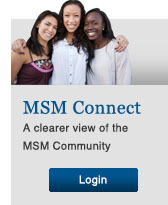Infection, Prevention and Control:
Reporting Exposures
Exposure is defined as contact with blood or other potentially infectious materials via skin, eye, mucous membrane, or parenteral contact.
Immediate Care of the Body Site
 |
 |
 |
|
Percutaneous wounds: cleansed thoroughly with soap and water using a surgical hand brush |
Non-intact skin: Cleanse with soap and water |
Mucous membrane: Irrigate with tape water using eye washing station or faucet |
Immediate Actions for Exposure
- Report the Incident:
- Notify your immediate supervisor, Occupational Health Service, and Student/Employee Health within 24 hours.
- Employees, residents, and staff should report to Human Resources/ODS.
- Complete an Incident Report:
- Fill out the necessary documentation. (See Guidelines for Needlestick and Body-Fluid Exposures)
- Initiate Post Exposure Prophylaxis (PEP):
- Access PEP via the hotline at 1-888-448-4911 or visit PEP Hotline.
- Seek Emergency Health Care:
- Follow current PEP guidelines for the most effective treatment within the recommended time frame.
Protocol for Exposure:
Student Injuries
- Immediate Treatment:
- Receive treatment within two hours of exposure
- Seek counseling at AUCC-SHWC for exposure assessment and management
Incident Reports:
Regardless of location, students must complete a needlestick incident report form on the day in which the incident occurred. The report will include information identifying the source of exposure and how to follow up. Bring a copy of the incident report to AUCC-SHWC. If the protocol is followed, AUCC-SHWC will test for the following labs: HIV, HBsAb, HBsAg, HBcAb, and Hepatitis C Ab.
To be eligible to receive evaluation, treatment, or initial counseling, each student must comply with the following requirements:
- Report exposure using the needlestick incident report form.
- Consult the AUCC-SHWC for evaluation, treatment, or initial counseling immediately.
- Provide a copy of the incident report on the day of appointment, which includes time, date, and location of the incident. The incident must be related to the student’s clinical duties as a registered student.
- Students must follow the procedures as outlined by AUCC-SHWC Policies (these guidelines are subject to revision and modification by the AUCC Student Health &Wellness Center’s Infection Prevention and Control team).
Counseling and Follow-Up:
Students are offered counseling and post exposure prophylaxis or “PEP,” a full HIV antiretroviral daily regimen for 28 days, which must begin within 72 hours of the exposure if there is concern for HIV transmission. If applicable, students’ follow up will be conducted by AUCC-SHWC staff on the initial lab results, and a follow up with AUCC-SHWC staff will occur in one month to repeat testing and discuss next steps. The incident will also be documented in the OSHA file. A three-month follow-up visit after the exposure will also be scheduled for final testing. The student can continue with classes during this time, even if taking PEP. Incident reports are shared with the Office of Compliance for review and Quality Assurance issues.
Financial Responsibility for Care and Treatment:
- The AUCC-SHWC will submit a medical insurance claim for the labs and treatment after occupational exposure.
- Students are responsible for costs beyond the insurance claim.
- Clinical agreements cover immediate and initial prophylactic treatment for medical students exposed to biohazards during clinical site rotations.
If a potentially infectious exposure occurs, do not allow feelings of embarrassment, a large workload, or misplaced peer pressures to prevent you from reporting the event immediately. Needle sticks and other exposures can be life-threatening. Responsible health care providers recognize that unintentional injuries and occupational exposures may occur and must be evaluated by competent, objective, and experienced medical professionals.

